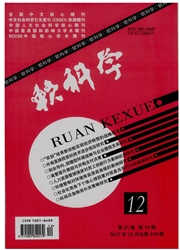

 中文摘要:
中文摘要:
运用AHP层次分析法与断裂点模型,基于重庆市、成都市、昆明市、贵阳市、西安市、武汉市与长沙市2013年度相关经济数据,构建了衡量城市辐射力的指标体系,测算了重庆市的城市辐射力并划分出其基本的辐射范围。研究表明:重庆市的辐射作用主要表现在南部与西南部对贵州省与云南省的辐射,对西部与东部的四川省与湖北省的辐射并不十分明显,而对北部与东南部的陕西省与湖南省的辐射则十分脆弱。鉴于此,重庆市应完善交通基础设施、加快城乡一体化、优化产业结构、推进成渝经济区建设、落实科教兴渝战略,以进一步提高重庆市的城市辐射力。
 英文摘要:
英文摘要:
Based on the relative economic data of 2013 of Chongqing Chengdu Kunming Guiyang Xi' an Wuhan and Changsha, this paper established an index system to measure the urban radiant ability and marked out its radiation scope by AHP and breaking point model. The empirical results suggested that the radiant effect of Chongqing mainly shows its south and southwestern areas to Guizhou Province and Yunnan Province; the effect to its west, Sichuan Province and its east Hubei Province is not fairly apparent; and the effect to its north, Shanxi Province and the southeast, Hunan Prov- ince is rather weak. Based on the empirical results and the analysis of results, this paper suggested that Chongqing should perfect the transportation infrastructure, speed up urban - rural integration, optimize the industrial structure, boost the construction of Chengdu - Chongqing Economic Zone and implement the strategy of prospering Chongqing through science -technology and education to enhance its urban radiant ability.
 同期刊论文项目
同期刊论文项目
 同项目期刊论文
同项目期刊论文
 期刊信息
期刊信息
